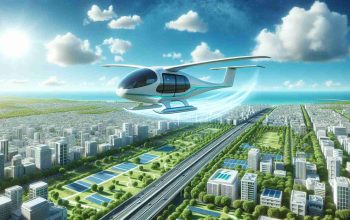The regulatory body overseeing road safety in the United States has launched an inquiry into Tesla’s autonomous driving software programs. The evaluation, conducted by the National Highway Traffic Safety Administration (NHTSA), will impact a range of Tesla vehicles manufactured between 2016 and 2024, totaling 2.4 million cars.
This move has raised concerns about the future prospects of Tesla, as any adverse findings could potentially lead to the removal of these vehicles from the market. The NHTSA’s decision follows four reported accidents involving Tesla’s “full self-driving” software, occurring in conditions of poor visibility such as fog or sun glare. Tragically, one incident resulted in a pedestrian fatality, while another left a person injured.
The assessment aims to determine the effectiveness of Tesla’s autonomous driving systems in detecting and responding to challenging situations. Additionally, past accidents involving autonomous vehicles under similar conditions will be scrutinized to gauge the overall safety performance.
It is important to note that Tesla’s “full self-driving” software is classified as a partial automation system by the NHTSA. This distinction underscores the ongoing debate around the level of autonomy and responsibility assigned to AI-driven vehicles.
While Tesla’s CEO, Elon Musk, recently unveiled the Cybercab, a fully autonomous “robotaxi,” investors have shown mixed reactions, causing a temporary dip in Tesla’s stock value. Despite this setback, Tesla’s shares remained steady following the NHTSA’s announcement, indicating a degree of investor confidence in the brand’s resilience.
In contrast to competitors like Waymo, Tesla’s autonomous driving technology relies heavily on cameras and artificial intelligence rather than advanced sensors such as Lidar and radar. While this approach is deemed cost-effective, concerns persist regarding its performance in scenarios with limited visibility.
Recent Developments Spark Further Debate Over Tesla’s Autonomous Driving Capabilities
The ongoing scrutiny of Tesla’s autonomous driving technology has brought to light additional factors that are crucial in understanding the landscape of autonomous vehicles. While the NHTSA investigation targets Tesla vehicles produced between 2016 and 2024, questions arise about the broader implications for the autonomous driving industry as a whole.
Key Questions:
1. How does Tesla’s autonomous driving technology compare to that of other manufacturers?
2. What role do regulatory bodies play in ensuring the safety of autonomous vehicles?
3. Are current testing protocols sufficient to assess the performance of autonomous driving systems in varied environmental conditions?
Key Challenges and Controversies:
1. **Data Security:** As autonomous driving systems become more prevalent, concerns about cybersecurity and potential vulnerabilities have come to the forefront. Ensuring the protection of user data and guarding against potential hacking attempts is a significant challenge facing the industry.
2. **Liability Issues:** The question of liability in the event of accidents involving autonomous vehicles remains a contentious issue. Determining responsibility, especially in cases where human intervention may be required, poses a legal and ethical dilemma.
3. **Public Trust:** Building public trust in autonomous driving technology is essential for widespread adoption. Addressing concerns about safety, reliability, and ethical considerations is crucial in garnering support from consumers and regulatory bodies.
Advantages and Disadvantages:
**Advantages:**
– **Safety Improvements:** Proponents of autonomous driving technology argue that it has the potential to reduce accidents caused by human error, ultimately enhancing road safety.
– **Efficiency:** Autonomous vehicles have the capacity to optimize traffic flow, reduce congestion, and improve overall transportation efficiency.
– **Accessibility:** Self-driving technology could revolutionize transportation for individuals with mobility challenges, providing greater accessibility to essential services.
**Disadvantages:**
– **Technical Limitations:** Current autonomous driving systems may struggle in complex or unpredictable scenarios, raising concerns about their reliability in real-world conditions.
– **Ethical Dilemmas:** Programming autonomous systems to make split-second decisions in potentially life-threatening situations presents ethical challenges that are yet to be fully resolved.
– **Regulatory Hurdles:** Developing and implementing consistent regulations for autonomous vehicles across different jurisdictions remains a significant barrier to widespread adoption.
For further insights into the regulatory landscape and technological advancements in autonomous driving, visit tesla.com.



